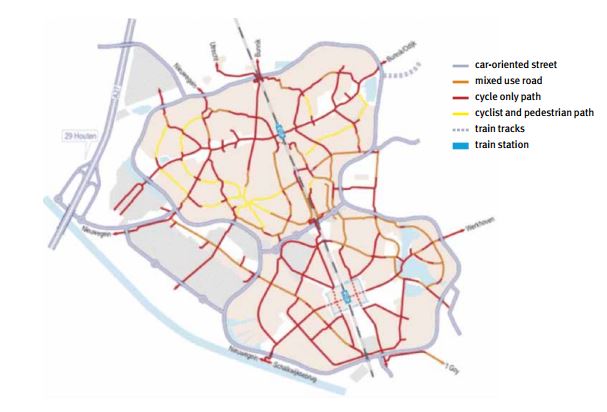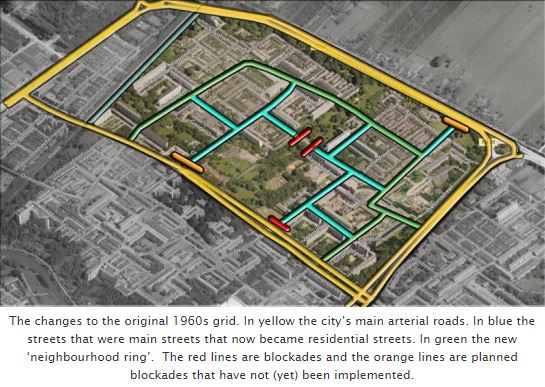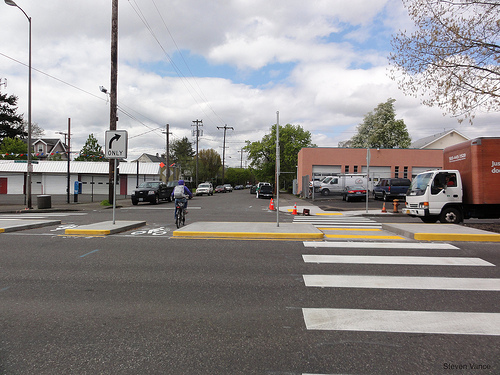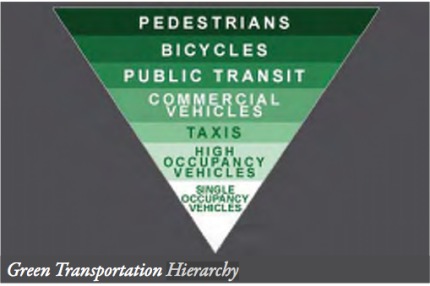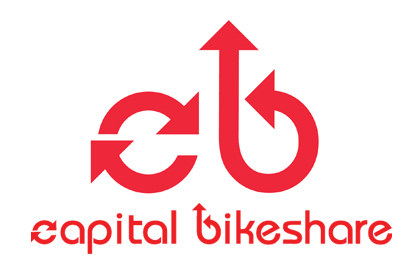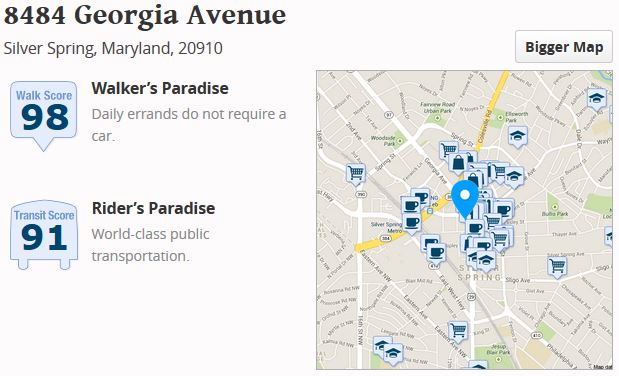As a resident of Arlington, I have a unique location to watch Capital Bikeshare “compete” with dockless bikeshare. I put “compete” in quotes because the mutual goal of Capital Bikeshare and the five dockless bikeshare companies is to get more people biking. However, some bike planners believe dockless bikeshare will pull enough people from Capital Bikeshare that it won’t be able to compete with dockless bikeshare.
Since bikeshare is still new to most Americans, I want to make sure everyone knows the difference between dock-based and dockless bikeshare. As the below photo shows, dock-based bikeshare systems require the bike to be docked at a station. Capital Bikeshare is the main dock-based bikeshare system that operates in the DC region.

Photo: Ray Atkinson
As the below photo shows, dockless bikeshare systems have bikes that are self-locked. The five dockless bikeshare companies operating in the DC region are Jump, LimeBike, Mobike, ofo, and Spin. While Jump is the only company with e-bikes, LimeBike and Spin announced last week that they plan to start offering e-bikes soon.

Photo: Ray Atkinson
While all six bikeshare systems have apps, which are shown below, it’s possible to use Capital Bikeshare without the app by purchasing a pass at the kiosk. Since not everyone has a smartphone, this reduces the barrier to bikeshare. In addition, only Capital Bikeshare can be used by paying cash. Many low-income people don’t have a credit or debit card, so this gives them access to using bikeshare.

Source: Transit App
I have a unique location to watch this bikeshare situation because of how the permitting process is unfolding across the DC region. While Capital Bikeshare is permitted to operate throughout the region, only DC has given permits to all five dockless bikeshare companies. As this Greater Greater Washington post explains, DC and Montgomery County, MD had an easier process than local jurisdictions in Virginia to create pilot dockless bikeshare programs because they are governed by Home Rule. Virginia is a Dillon Rule state, which means state law preempts local law. Local jurisdictions must receive permission from the General Assembly to act on local matters. Yes, Maryland is also a Dillon Rule state. However, Montgomery County became the first county in Maryland to adopt a home rule charter in 1948.
Since DC is geographically small and dockless bikeshare companies have been struggling to inform their customers that they don’t have permits to operate outside of DC, I have been watching how human behavior and government processes react to this issue. Virginia is a Dillon Rule state, which is impacting the ability of local jurisdictions to create pilot dockless bikeshare programs and regulate the dockless bikeshare companies. This is why Virginia doesn’t officially have dockless bikeshare yet. Arlington wrote this blog post to educate people about the different types of bikeshare. I found the following statements interesting.
“the six-month trial of dockless bikeshare is entirely a DC project at this time. The operators do not have an agreement with Arlington County so their operating location is within Washington, DC borders.
If you see a bike in Arlington, you can contact the operator to collect their bike to take back into DC, or you can ride the bike back into the operating location (JUMP bike offers a $1 credit every when a bike is ridden back into the operating area).
This is all still very early in the experimental phase so there is no telling right now how policies could change.”
If this wasn’t confusing enough, only four of the five dockless bikeshare companies have permits from Montgomery County, MD to operate in Silver Spring and Takoma Park. I believe the fifth company, Jump, has decided not to expand to Montgomery County yet because it wants to focus on DC. None of the dockless bikeshare companies have permits to operate elsewhere in DC’s Maryland and Virginia suburbs. Plus, they can’t operate on National Park Service (NPS) property. This is important because the National Mall and regional trails like the Mount Vernon Trail are owned by the NPS.

Map of dockless bikeshare’s service area in Silver Spring and Takoma Park, MD. Source: WashCycle
Even if the NPS gave permits to the dockless bikeshare companies to operate on its property, e-bikes are banned from NPS-owned trails. However, I haven’t seen this ban enforced and it doesn’t appear to be discouraging many people from riding e-bikes on trails. I am curious to see whether this controversial NPS ban becomes more heated as LimeBike and Spin join Jump in having e-bikes.
Since many regions throughout the US are working on dockless bikeshare regulations and permit programs, I want to share the below regulation breakdown from Twelve Tone Consulting. The North American Bikeshare Association published the Dockless Bikeshare Regulation Preliminary Guidance in January 2018.

Source: Twelve Tone Consulting’s Dockless Bikes: Regulation Breakdown
Dockless bikeshare parking issues have been reported in many locations, so look at Dockless Bike Fail’s tweets for photo evidence. What do you think about the issues I have discussed in this post?



